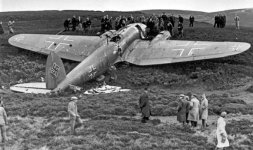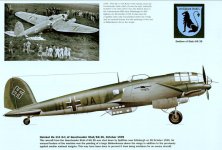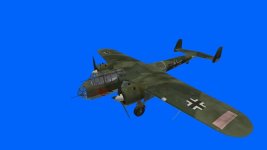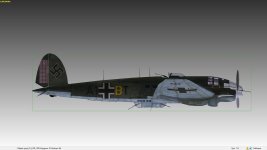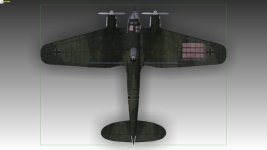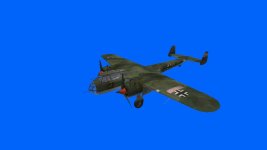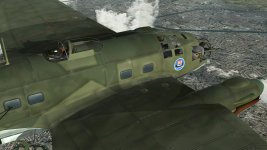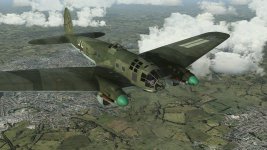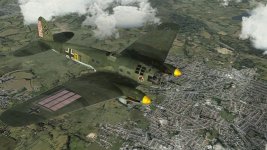-
There seems to be an uptick in Political comments in recent months. Those of us who are long time members of the site know that Political and Religious content has been banned for years. Nothing has changed. Please leave all political and religious comments out of the forums.
If you recently joined the forums you were not presented with this restriction in the terms of service. This was due to a conversion error when we went from vBulletin to Xenforo. We have updated our terms of service to reflect these corrections.
Please note any post refering to a politician will be considered political even if it is intended to be humor. Our experience is these topics have a way of dividing the forums and causing deep resentment among members. It is a poison to the community. We appreciate compliance with the rules.
The Staff of SOH
You should upgrade or use an alternative browser.
Screenshots!
- Thread starter Bravo/4
- Start date
gecko
Charter Member

Yes, inland water bodies can be colored more appropriately rather than some shade of blue. I have plans for clear blue glacial lakes in the Alps, and muddy lowland rivers and estuaries, etc. I'm starting with the more out of the way places on the map and eventually working over to the areas more frequently flown over. The Baltic is next on my list after the Adriatic is done. It won't get rid of the surf though, unfortunately. If some enterprising individual wanted to create low flat concrete looking objects large enough to just cover the shorelines, the surf could be hidden that way. Again, that's a ton of work to place them all!
Led Zeppelin
Charter Member
Attachments
Bravo/4
Charter Member
Wow John, that's some intricate looking camo!
LOL Yea tell me about it Dan, it's one the two wild one's you asked me to do!
 here's the other, which will fit nicely into MAW!
here's the other, which will fit nicely into MAW!
Foute Man
Charter Member
Nice work John!!In the first picture, are the white stripes on the wing, is that the flight leaders aircraft? If so, I wonder what the meaning of these large Balkencreuz were along side the normal sized ones? Were they an early attempt to show the flight leaders aircraft?
the heinkel on the picture is this one, possible reason for the large balkenkreuz on the wing in the description:
more info about the crash here: https://aviation-safety.net/wikibase/wiki.php?id=170752
so the big balkenkreuz on the wing has nothing to do with the aircraft being from the stab staffel.
during a small timeframe in the battle of britain (september 1940 = start of the big daylight raids on london) part of the luftwaffe units marked their bombers with stripes. unfortunately their a little to no german records about the use and function of this markings, only source material are photo's and british intelligence reports about crashed aircraft with such markings.
however it is believed these markings were tactical markings, probably for easier forming up in large formations. aircraft with markings on their port wing flew on the starboard side the formation, aircraft in the middle had marking applied on both sides, on the port side of the formationm aircraft had the markings applied to the starboard side.
the markings could change with every raid, photo's and filmfootage show dorniers from kg 76 with markings on their starboard wing on september 7, while every marked do17 from kg 76 that crashed on september 15 had their markings on the port side.....
a squadron leader usually flew in an aircraft with with nr 1 (for fighters) or the letter "a" (bombers or twin engined fighters), however this is in theory, sometimes real life came in between
Attachments
Bravo/4
Charter Member
Nice work John!!In the first picture, are the white stripes on the wing, is that the flight leaders aircraft? If so, I wonder what the meaning of these large Balkencreuz were along side the normal sized ones? Were they an early attempt to show the flight leaders aircraft?
Hi Scott, as far as I understand the white, or rather "Pink" (thanks Dan) bars were formation aids.
They are formation markings used to help the unit 'form up' in the air.
"The "tactical formation" markings were the allegedly white bands that appeared on the tail fin and rudder and on the upper wing surface during September 1940. The purpose of the marking was to enable pilots flying in formation to quickly determine the position of other aircraft in the formation. Aircraft with the bar on the port (left) wing and port fin meant that they were on the starboard (right) side of the formation. Also the number of bars might have indicated the Gruppe or Staffel status of the aircraft.
As for the large Balkencreuz, that's a bit easier to explain, they were used in an attempt to stop trigger happy Luftwaffe fighter pilots shooting down their own bombers, here's another pic with comedy Balkencreuz applied!


gecko
Charter Member
LOL Yea tell me about it Dan, it's one the two wild one's you asked me to do!here's the other, which will fit nicely into MAW!

Dang, I should have looked closer, I didn't realize that one was so complex! Both are looking great though!
Foute Man
Charter Member
- markings were applied from september 7th on, and in some occasions were carried untill november 1940.
- no luftwaffe record found (so far) with the order to paint the markings, so exact purpose (of the variation) of the markings unknown, but most likely to mark their place in the big formation
- there's is photographic evidence that suggest that a complete unit would have carried the same markings, however there's also enough evidence that shows variation of the markings of the same unit of the same day.
- black and white pictures and crash reports would suggest the markings to be white only, there are just to many examples in crash report by british intelligence officers about pink markings to mark them as incorrect. and why questioning an officer's observation if every other observartion he made can be confirmed or labeled as plausible..... no photographic evidence of yellow markings, but again several records in british intelligence reports... still enought reports with markings "white". so markings could either be applied in white, pink and yellow.
- correct value for pink is unknown, as there is no 1940 ral color chart (according to peter scott - fm). one suggestion is that the pink paint was borrowed from the wehrmacht (in use to stencil unit markings on vehicles). in a november 1940 crash report the pink is described as "salmon pink", and that value is know in allied 1940 color charts. the pink could be field mixed, but without written order no known formula..... so the exact shade of pink is still speculative
- markings appear to be on luftflotte 2 bombers only, seen on do17z from kg 3 and i & iii./kg 76, ju88a from kg 77 (and probably also from ii./kg 76) and he111 from kg 1, kg 26 and kg 53
- the theory is that the number of markings on the rudder would be repeated on the wing. this cannot be proven in all occasions, as the markings don't show on photo'son wing and rudder or the markings weren't mentioned in crash report. (british crash reports weren't written according to an exact protocol (yet), so it is possible that an officer did not label the markings as relevant and therefore did not mention them)
- in general do17z had vertical markings on wing (outboard of the balkenkreuz) and a horizontal mark on rudder/fin, ju88a and he111 had horizontal markings on the wings (inboard of the balkenkreuz) and vertical markings on rudder/fin....but as always, there are confirmed exeptions to the rule
attached some screenshots of works in progress
Attachments
Foute Man
Charter Member
Thanks Ton, very interesting stuff!
if interested in the articles, pm me your email and i weil send them to you (or send you a link), or perhaps you might have them somewhere in your digital library....
there is article in the october 2004 issue of Model Aircraft Monthly called "mystery markings" and a second one as a chapter in "On Target Special 09 - The Battle of Britain" published in 2010
mongoose
SOH-CM-2025
Attachments
Frosty
SOH-CM-2025
Dan has done a bit of editing, looks so much better now with glass!
Also doing a few Eastern Front schemes.
Fingerlicking good, John!!
Daniel, care to share your 'glass recipe'? I can't seem to find convincing values for glass in gmax... (well, Perspex, actually)
gecko
Charter Member
Reflective - on
Color RGB - 96 96 96
Transparency - 35
Specular RGB - e5 e5 e5
Glossiness - 00 00 00 44
No textures applied
Here's how it looks in the m3d:
00 00 FF 00 - 96 96 96 35 - 00 00 00 FF - E5 E5 E5 FF - 00 00 00 44 - FF FF FF FF
Works well for most applications on the exterior, glass in the VC usually needs to be toned down more.
Those are looking good Ton, I like the overspray pattern on the pink bars - definitely field applied!




